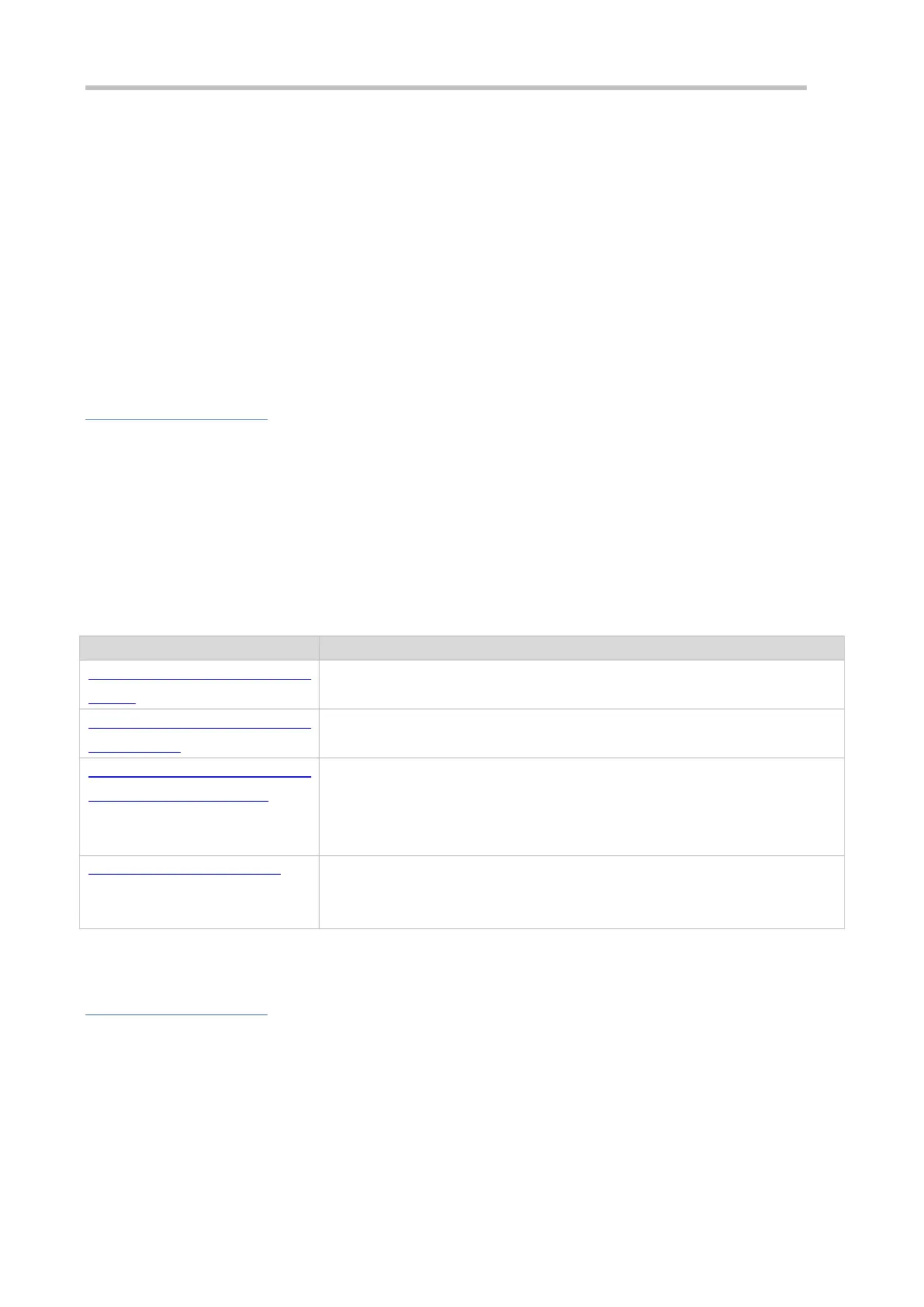Configuration Guide Configuring NAT
10 Configuring NAT
10.1 Overview
Network Address Translation (NAT) is a process of translating the IP address in the header of an IP data packet into
another IP address. In practice, NAT enables private networks that use unregistered IP addresses to access public
networks. This way of using a small number of public IP addresses to represent substantial private IP addresses
implements IP address conservation.
Protocols and
Standards
RFC 1631: The IP Network Address Translator (NAT)
RFC 2663: IP Network Address Translator (NAT) Terminology and Considerations
RFC 2391: Load Sharing using IP Network Address Translation (LSNAT)
RFC 4008: Definitions of Managed Objects for Network Address Translators (NAT)
10.2 Applications
Intranet Users' Access to the
Internet
NAT allows an intranet to communicate with the Internet by translating an inside
private IP address into a globally unique IP address.
External Users' Access to an
Intranet Server
NAT allows external networks to access internal devices by mapping one or more
internal hosts to a network server.
Source/Destination Address
Translation for Internal Users
When two private networks to interconnect with each other are configured with the
same IP address or the same global IP address is allocated to both a private
network and a public network, the two network hosts with the same IP address
cannot communicate. NAT allows overlapping networks to communicate..
Intranet Server Load Balancing
When the TCP traffic load of an intranet host is excessively heavy, multiple hosts
are deployed for TCP service load balancing. In this case, NAT may be used to
attain this objective.
10.2.1 Intranet Users' Access to the Internet
Scenario
A PC is located in an intranet while a server is located in an extranet, as shown in Figure 10-1. In view of IP address
depletion, only one or a few public IP addresses are allocated to the entire campus network. An egress router belongs to
the intranet, and connects to the extranet. The basic NAT function is required on the egress router to allow the intranet PC
to access the extranet server.
Figure 10-1

